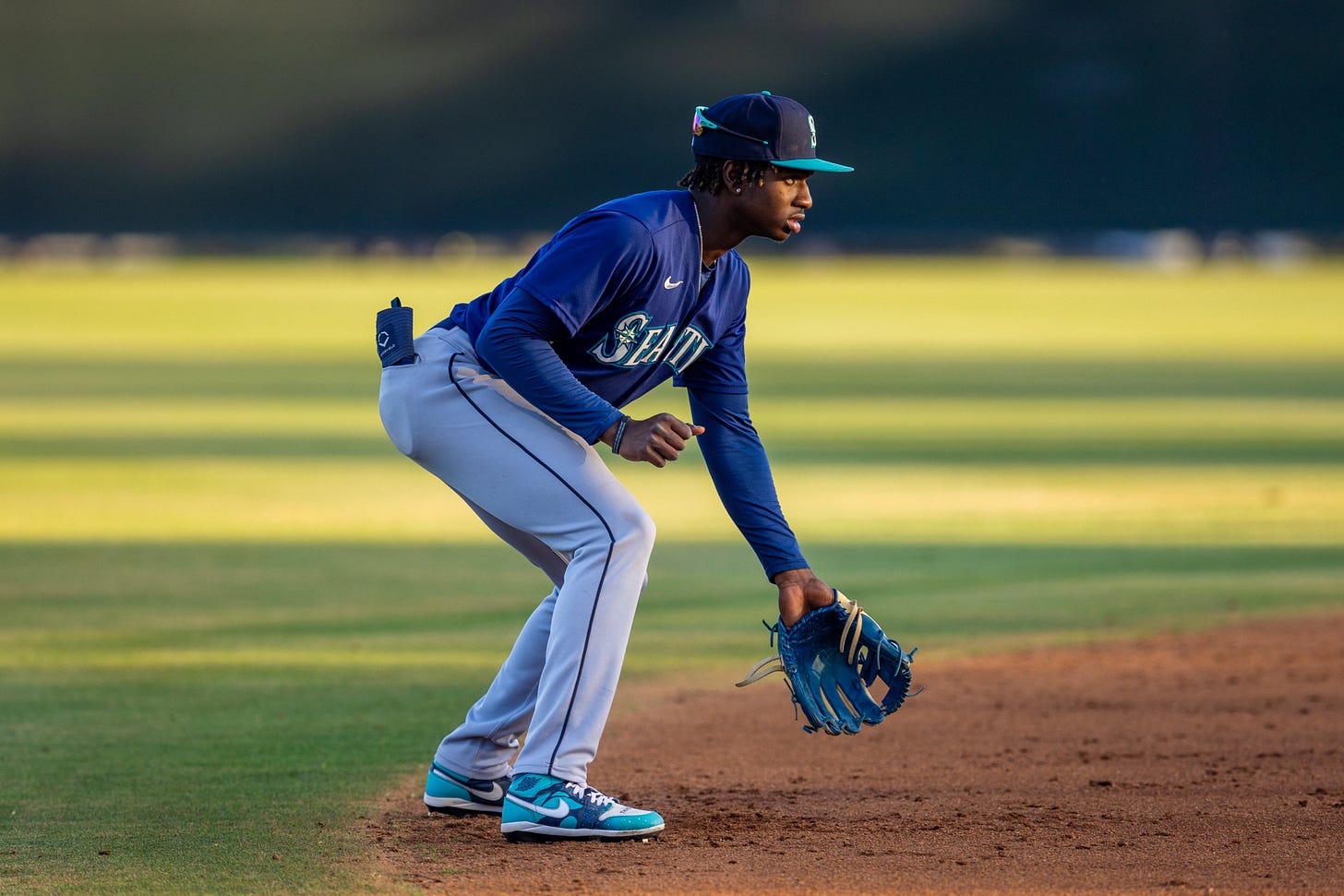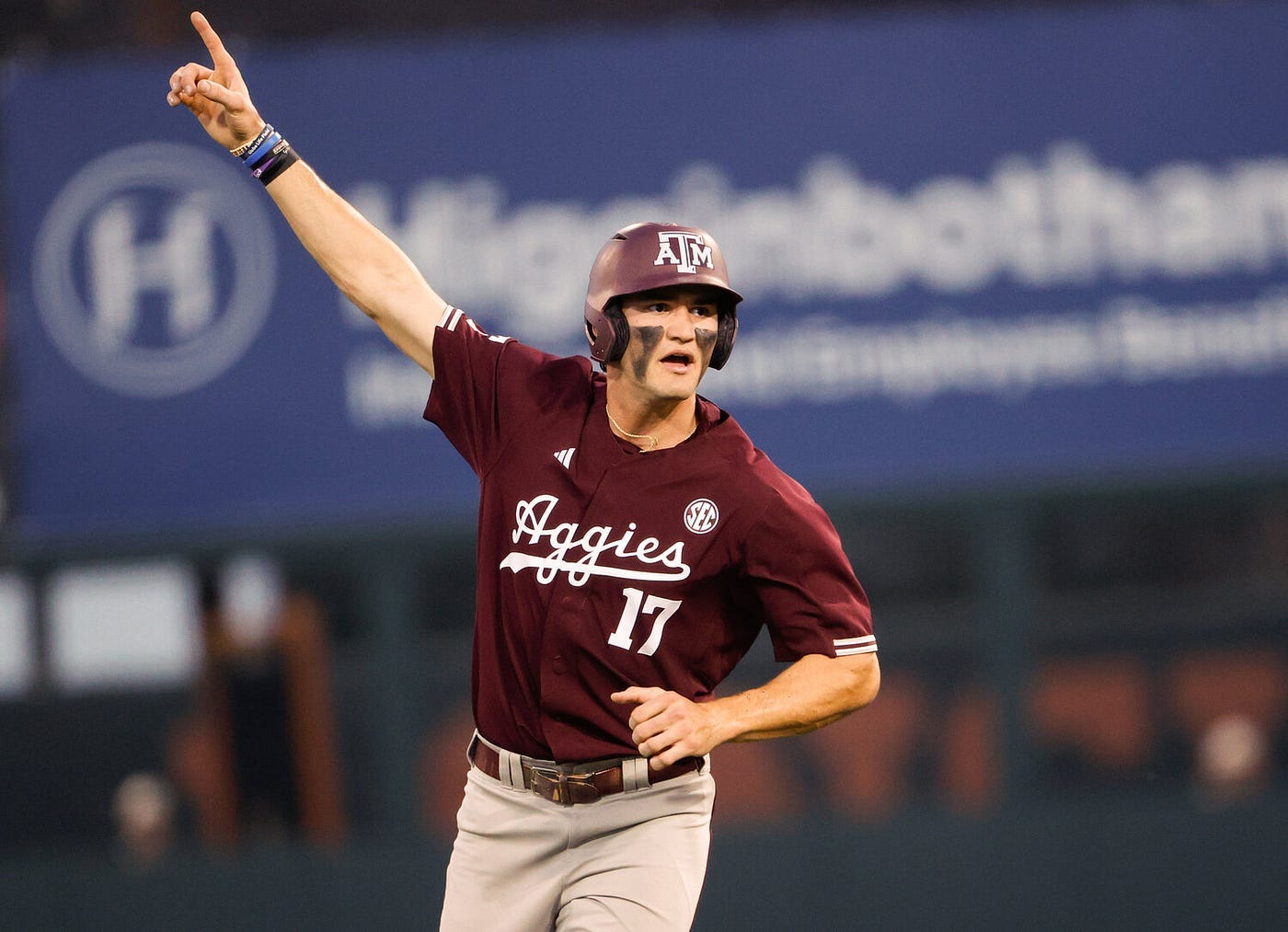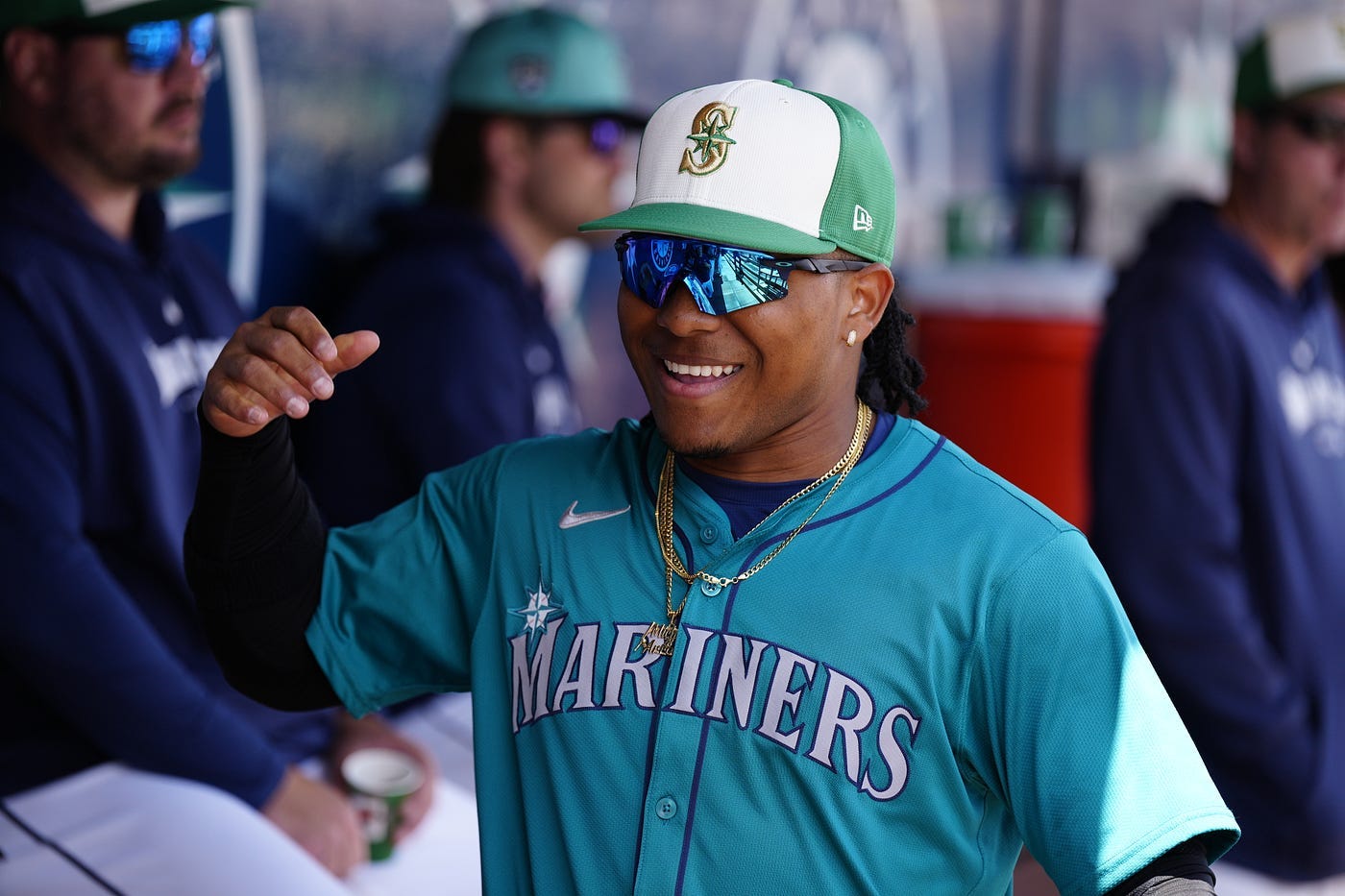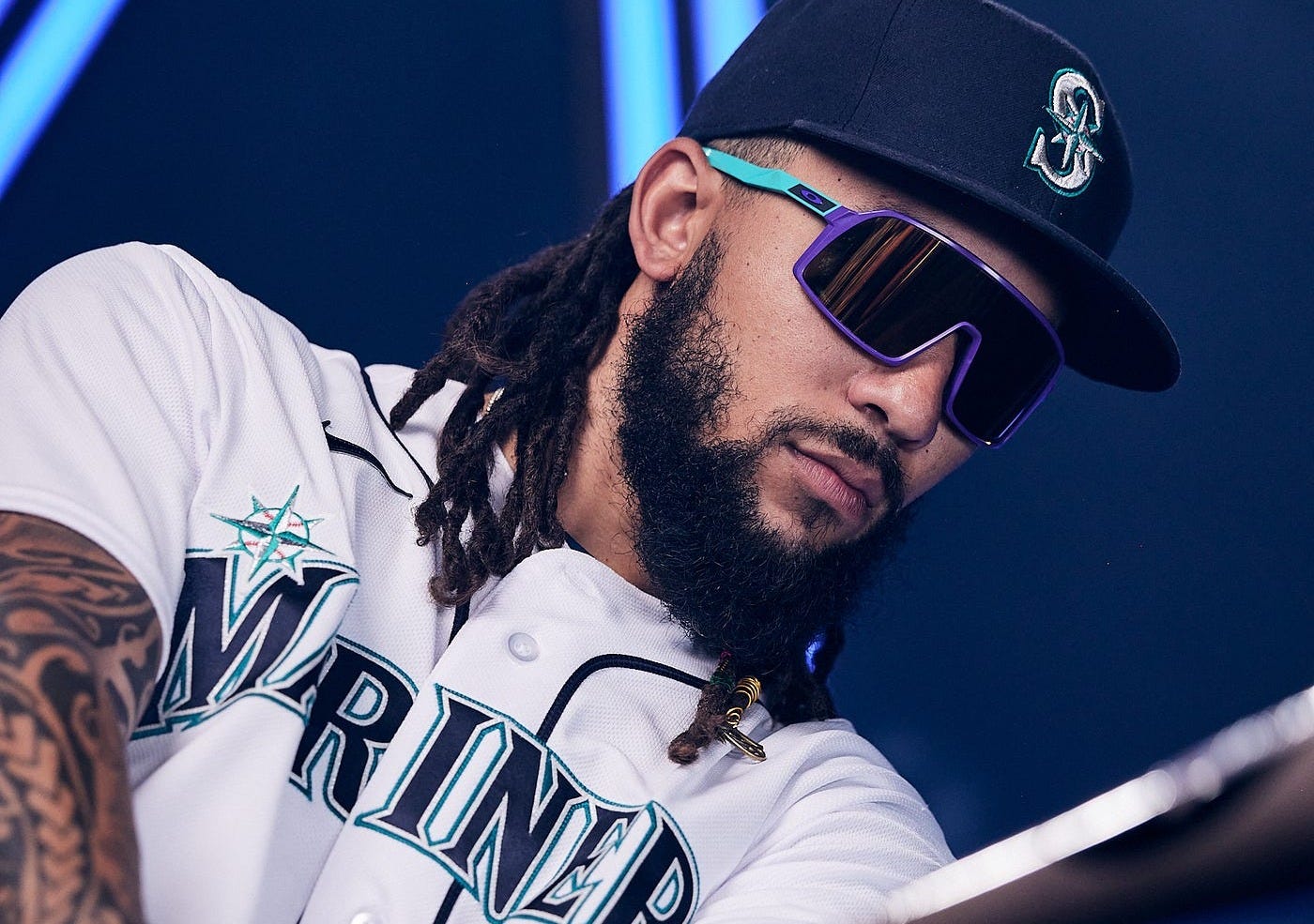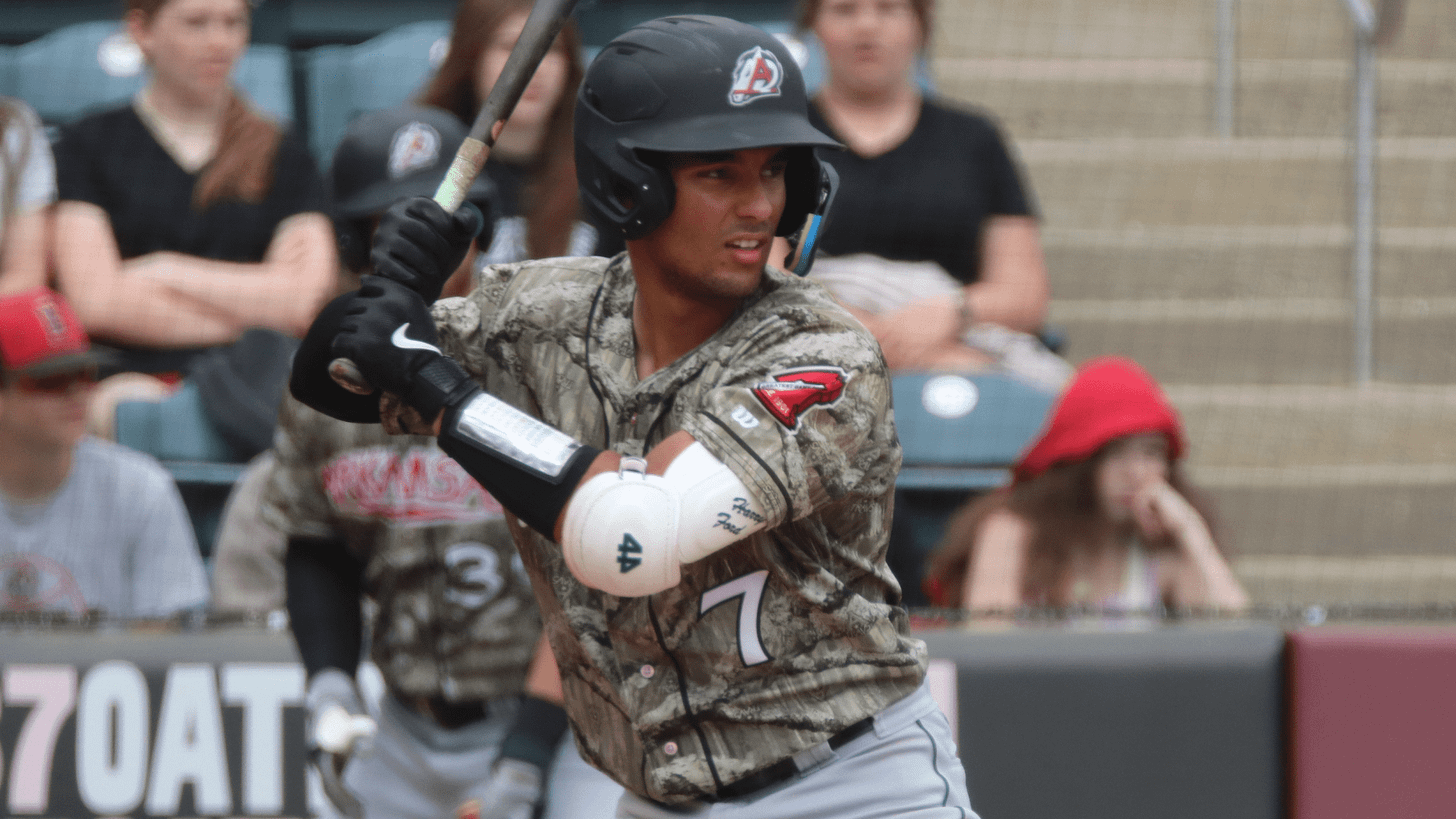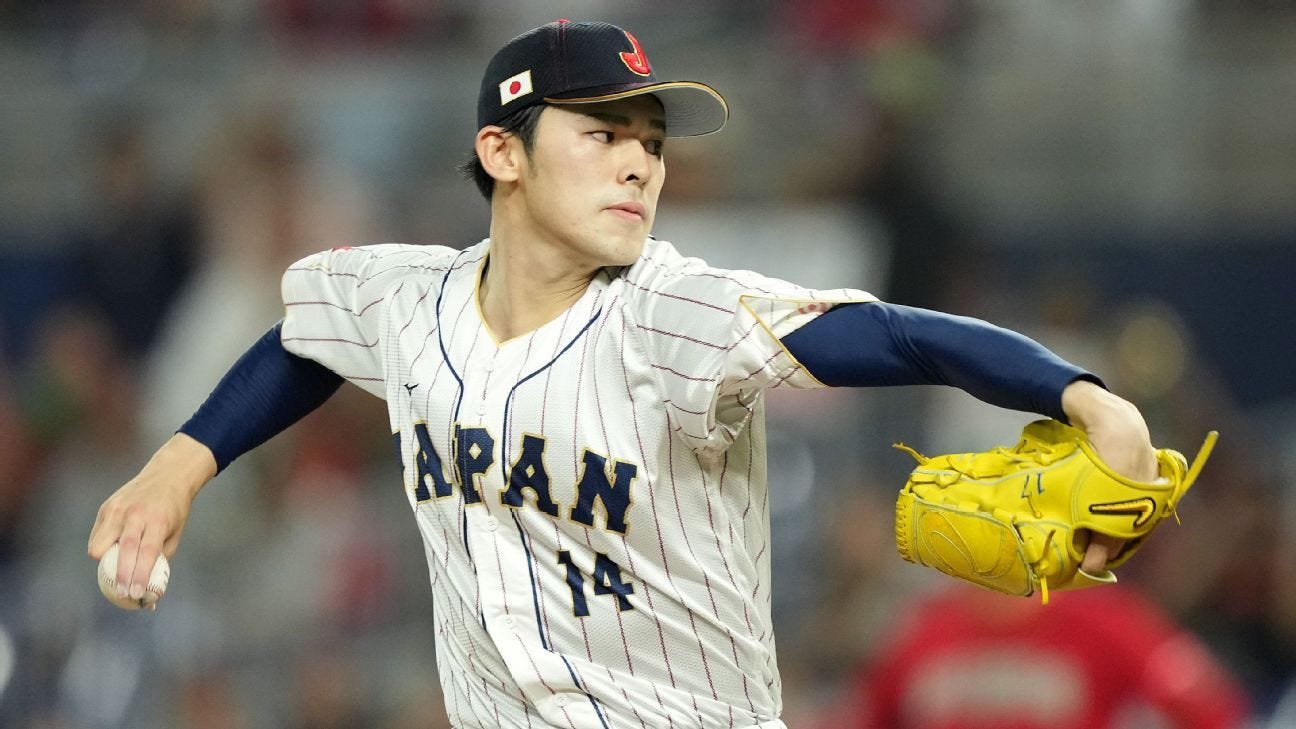Is this the deepest system the Mariners have ever had?
The Seattle Mariners have had a strong farm system for years, and it’s paid off at the big-league level since 2021 in the form of impact, homegrown talent, and trade acquisitions making a difference, including Luis Castillo and Randy Arozarena.
This particular group, however, is different. It may be the deepest collection of talent the club has ever had, and it’s probably the deepest I’ve seen it in the 22 years I’ve been surveying the organization.
It’s not necessarily the best Top 3 or Top 5 — the 2021 class boasted Jarred Kelenic, Julio Rodriguez, Logan Gilbert, George Kirby, and Noelvi Marte at the top of my rankings — but one can argue it’s a better Top 10 than ‘21, and there’s more balance, probability, and upside from 1 through 25 and beyond.
For context, the No. 20 prospect is a 6-foot-4, 190-pound right-hander who turned 19 in February, touches 97 mph and has flashed three major league pitches, two of which project to miss bats. He’d be in the top 10 in a few orgs thanks to a ceiling up to and including an elevated rotation role.
A year ago, my Top 5 included three middle infielders, a catcher, and a centerfielder — all middle-of-the-diamond prospects. This time around, a unique arm has snuck its way into the mix.
Here are my Top 50 Mariners prospects for the start of 2025, but first, a couple of notes:
Eligibility is based on standard rookie status set by Major League Baseball of 130 at-bats (not plate appearances) or 50 innings pitched in one or more seasons, except I ignore the 45-day service time limits, which is why, for example, Nos. 13 and 18 below is not on anyone else’s list. These limits are all arbitrary, but I’ve always felt the 45-day limit was punitive toward young players who may be on the active 26-man yet receive little playing time. Primarily sitting on the bench for a portion of six-plus weeks shouldn’t be disqualifying.
Rankings are based on a combination of upside and probability. Positional value matters, as does the risk of injury. A prep arm, due to a long history of career-delaying or worse injuries at a higher rate than any other demographic, will not grade out as high as a college pitcher with the same upside.
Grades and reports are the result of live looks, video study, statistical analysis, and hundreds of conversations with the scouting and player development industry.
My rankings are not determined with the Seattle Mariners in mind. I whiteboard profiles with no specific organization or situation in mind, and do not consider ballparks, payrolls, or the current big-league roster.
Injury histories play a factor in a player’s grade (and ranking). Current injuries carry more weight due to the unknown impact of the injury on tools and skills.
Comps are not based on style of play or raw physical tools, they are based on level and manner of projected impact. In addition, comps are never perfect. You’ll always find something in a comparison that isn’t a fit. But the most important elements of the player’s game should be reflected in the comp, adding up to a future value.
ETAs are aimed at the player’s most likely stick year, not necessarily his first taste of the big leagues. What’s a ‘stick year’? The year the player stays in the majors and doesn’t have to go back to the minors for further development. It’s just a term I made up to differentiate.
Rankings are subjective, and how one values certain profiles will differ. It’s not a matter of right and wrong. No one knows the outcomes. Every decision clubs make is a wager, and so is every profile.
A player ranking lower in 2025 than last year is not necessarily an indication of poor performance, regressing tools, or stagnant development. Factors such as new players, and fellow prospects’ developing faster will affect the placement in the rankings accordingly.
The position listed below is the most valuable spot on the field conceivable for the player — not the most likely long-term one — and it doesn’t suggest the player projects well there. Just potentially well enough, such as the likes of Rafael Devers at third base, Oneil Cruz at shortstop, and Yordan Alvarez in left field.
The affiliates listed are my projected starting assignments, not including injury rehab.
Field grades reflect overall defensive value, not the expected performance at the listed position.
Run grades depict a player’s value created by his speed, including baserunning (and stealing) and raw defensive elements.
The plus sign next to any tool grades indicates room for growth based on physical tools, without present confidence to project to the next half grade or more.
Age as of July 1, 2025
[Rank, Player, Position — Proj. Assignment (level) | Bats/Throws | Age]
1. Colt Emerson, SS — Everett (A+) | L/R | 19
The Mariners’ 2023 first-round pick possesses advanced ability to track breaking balls, judge the strike zone, and find the barrel with balance and increasing leverage. It’s plus bat speed on a short-to-the-ball swing, already covering the zone middle-in to middle-away.
He’ll need to show more consistency on velocity up, but he offers easy swing malleability and uses the whole field, line to line – with some authority. As he matures, Emerson will create more loft and likely reach 15-20 homer power, but there’s a real chance at more, perhaps into the mid-20s.
Emerson is an above-average athlete, but projects to average speed. He’s not likely to be much of a base-stealing threat, however. He’s smooth in his actions and has enough arm to stick at shortstop, but profiles better at second base or the hot corner long-term, but his hands work and he’s shown solid instincts, so it’s not entirely out of the question he reaches the big leagues as a shortstop. I’m betting on a slightly more power-oriented version that ultimately lands at third.
Emerson should start his 2025 back in Everett with at least a chance to hit his way to Double-A before he turns 20. His natural ability to hit may mean a quick path to the majors where he carries upside as a perennial All-Star.
TOOLS
HIT: 70 | POWER: 55 | RUN: 50 | FIELD: 55 | ARM: 55
COMPS: Mike Greenwell, Chase Utley
ETA: 2026



